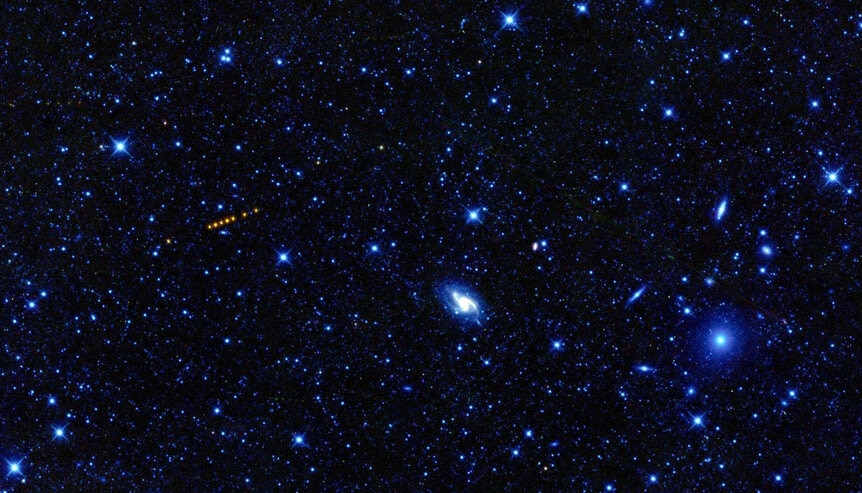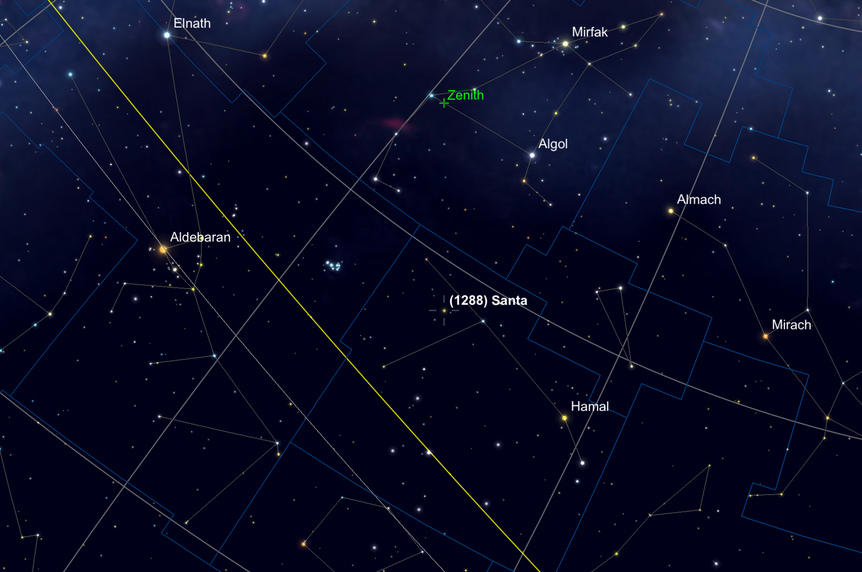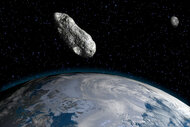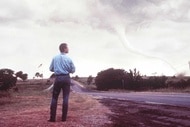Create a free profile to get unlimited access to exclusive videos, sweepstakes, and more!
A lump of solar system coal

Our solar system consists of one star (the Sun), eight (or more) major planets, a couple of hundred moons, and a whole lot of smaller junk. Comets, dust … y'know, debris. Some of this stuff is rocky or metallic (or both), and we call them asteroids. They have all kinds of orbits, but the vast majority orbit the Sun between Mars and Jupiter. This region is called the main belt.
There are probably a billion asteroids bigger than 100 meters across. Only a few are really big, and the numbers increase as size of the asteroid decreases.
Ceres is the biggest, with a diameter of over 900 kilometers. Pallas is next at 545. Then Vesta, then Hygiea … if you keep going down that list, around the time you hit the 1100th asteroid or so, you come to one that's just over 30 km across. Respectable, but not huge. Still, given the time of year, it's special.
Why? The name. The full designation of this particular asteroid is 1288 Santa (1933 QM). Yes, seriously, and yes, it's named after Santa (not to be confused with asteroid 2620 Santana, named after the musician Carlos Santana … or 29246 Clausius, for that matter, named after a German physicist).
Santa was discovered in 1933 at the Royal Observatory of Belgium by Eugène Delporte and was named by E. de Caro, who calculated its orbit. Its path around the Sun is rather unremarkable, to be honest. It has a mildly elliptical orbit that's tipped by about 7° to the plane of the solar system, and stays roughly 435 million km from the Sun. Colder than the North Pole by a bit out there.
This in turn means it never gets much closer than 280 million km from Earth, which is a long way. It'd be hard to deliver presents from that distance, too.
I became aware of this asteroid a few years ago when my friend, astronomer Amy Mainzer, tweeted an image of it from the Wide-field Infrared Survey Explorer (WISE), an orbiting observatory that surveyed the sky in infrared light. Asteroids are dim in visible light but glow in the IR due to their warmth, making them easier to spot. As the asteroid moves, it creates a series of dots when multiple images are stacked together.
But this image is cool for another reason. Astronomers determine the size of an asteroid based on its brightness. For a given brightness we see, a dark asteroid has to be bigger than a shiny, reflective one. In general we know how far an asteroid is from us and the Sun, as well as its brightness. If we know how reflective it is we can use that to measure its size … but that's tricky to do with just visible light.
The advantage of WISE is that we can measure that reflectivity! The warmer an asteroid is the brighter it is in infrared (that's why it's called thermal infrared), and its warmth depends on how well it absorbs and reflects sunlight. Combining the infrared and visible light data yields the asteroid's reflectivity, and then its size can be determined.
Using measurements from WISE, the reflectivity of Santa is found to be about 0.04. That means it's dark, reflecting only 4% of the light that hits it!
In fact, it's darker than coal. How'd you like to find that in your stocking?
Wait. Stop. That joke doesn't work. I'd like that a lot. A piece of an asteroid makes a great present! From these measurements, it was found that Santa is also over 30 km across. You better have a big foot.
One more thing. It occurs to me that every year on Christmas Eve, NORAD "tracks" Santa's sleigh. Maybe they're looking in the wrong direction. I mean, up is good, but it's not up enough.
Not that seeing Santa is all that easy. On Christmas Eve it'll be in the constellation of Aries, up high at sunset. The problem is, you'll need a good telescope: At a magnitude of 16 it's 10,000 times fainter than the faintest star you can see with the naked eye!
It may be a jolly old asteroid, but it's not a bright one. This isn't advice I generally give (usually it's "Go outside and look up!"), but just this one time, maybe, it's probably better to stay inside, all snug in your bed.



























